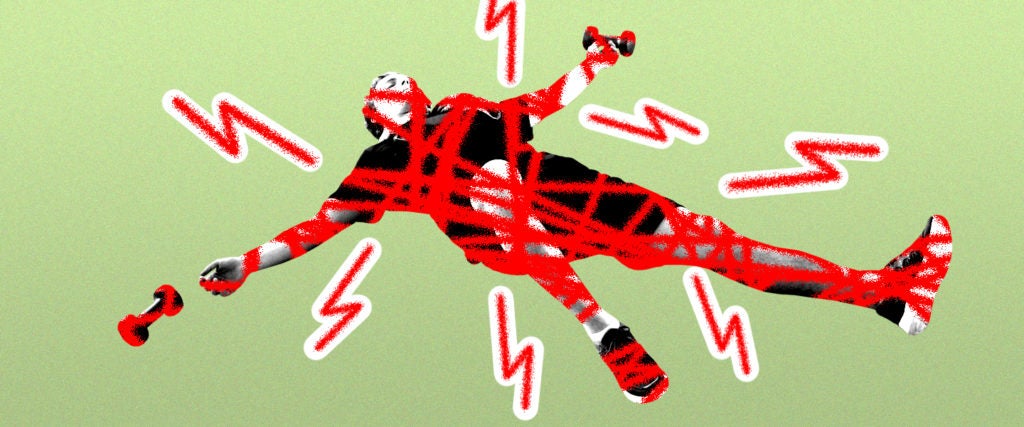The worst thing about working out is that you have to keep doing it. You finish one workout, feel good about yourself and are faced with the same pressure to do it all over again the next day. It’s even worse when you workout hard enough to be sore. You mean to tell me that not only do I have to work out again, but now I have to do it while feeling like I got hit by a bus? Isn’t the fact that I’m sore maybe a sign I can sit this one out? Must existence feel like such a Sisyphean task?
“It varies according to the individual,” says Sean Wilson, a personal trainer in L.A. “Because I train often, I recover faster. Generally speaking, most people can only train the same muscle group three times per week.”
That soreness you’re feeling is likely a sign that you’re building muscle. When you lift weights or do resistance training, you’re creating microtears in the muscle. Eventually, your body repairs these microtears and builds back the muscle bigger than it was before.
“Repair” is an essential part of this equation: Repeatedly working muscles that already have microtears needing to heal won’t really help you make progress. For that reason, soreness in a particular muscle group is indeed an excuse to not work that muscle group too hard until the soreness ceases. This is why many people workout specific muscle groups on varying days — you might have burnt your legs out yesterday, but your arm or ab muscles are still safe to exercise.
“However, even if you’re too sore to strength train, there’s always cardio or active recovery,” says Wilson.
Frick.
• Read next: Do Kegels Burn Calories?
Unfortunately, the pressure to do cardio is like Michael Myers in the first half of Halloween — it’s always just standing off in the distance staring at you, making you feel vaguely unsettled. Still, you don’t have to go too wild with it. Gentle cardio like walking or swimming is generally safe to do while sore, and might even help you feel better. Stretching and yoga can also help with recovery.
That said, if you can barely make it up a flight of stairs, don’t pressure yourself to exercise. Again, something light like a walk might lessen the pain, but lying on the couch for an afternoon will probably help, too.
There are a few other important things to keep in mind with exercise and soreness. Needing a pain reliever like ibuprofen to manage the soreness, difficulty performing your regular activities and multi-day soreness are likely signs that you really should take a break. You might also want to familiarize yourself with the signs of rhabdomyolysis, a condition that occurs from your muscles breaking down so much that your kidneys literally become clogged with dead tissue. Typically, dark urine, swollen muscles and severe pain are markers of rhabdo, and signals that you should go to a hospital.
And of course, know the difference between pain from injury and pain from soreness. Typically, pain from injury will only occur on one side of the body, while soreness will happen on both. An injury will likely require more time to heal, but you can usually still perform exercises that don’t incorporate the injured part of the body (or stick to cardio). Both soreness and an injury have the potential to heal themselves, but if either hurt for more than a couple days, see a doctor.
All of this requires quite a bit of familiarity with one’s own body and some self-discipline — it’s pretty easy to convince yourself you’re too sore to workout when you know swimming laps would probably actually feel good. Soreness is an excuse to skip a workout, but in reality, if you’re planning your workouts right (that is, scheduling rest days and organizing them so you don’t work the same muscle group two days in a row) you won’t need the excuse in the first place. Cardio will probably still be watching you from the bushes, though.

